With the sun dropping below the hills the chase was on. The crows had gathered by the hundreds behind the store fronts in West Lebanon, New Hampshire. They’d streamed in from all directions, calling loudly on arrival. Some perched in sumac trees and picked at the seeds. Others cried out on our approach. Then, without warning, they were off. The game was afoot!
We followed them as best we could, zig-zagging through traffic and city streets, as they streamed from the pre-roost towards their final destination. With the light fading fast, we found them. Thousands of crows, with more arriving by the second, gathered in the trees and on the ground. Sometime swirling up into the air over our heads in a great cloud of black birds, then settling down again in the trees with a cacophony of calls.
Join us on our great adventure as we track down a huge winter crow roost and talk about why these amazing birds gather in such large flocks. We’ll even talk about why they are sometimes called a murder of crows.
Listen to the show
More Information about American Crows
- Report your American Crow and other bird sightings at Vermont eBird, a project of the Vermont Atlas of Life.
- View a map of recent American Crow sightings reported to Vermont eBird.
- Add your photographs and observations of winter roosts to the Crows of Vermont project on iNaturalist.
- Learn more about American Crows at All About Birds.
- More on the etymology of the phrase “a murder of crows.”
Images from the show
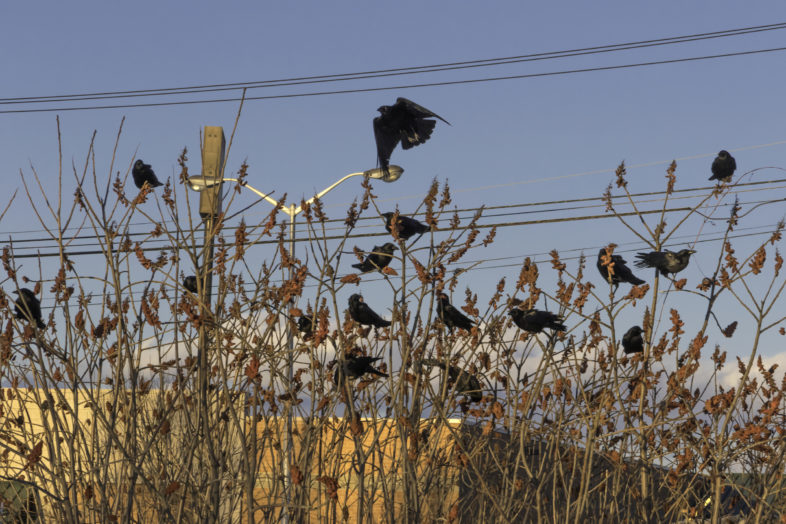
American Crows gathering in a late winter afternoon pre-roost. Some were feeding on the seeds of Staghorn Sumac. © K.P. McFarland
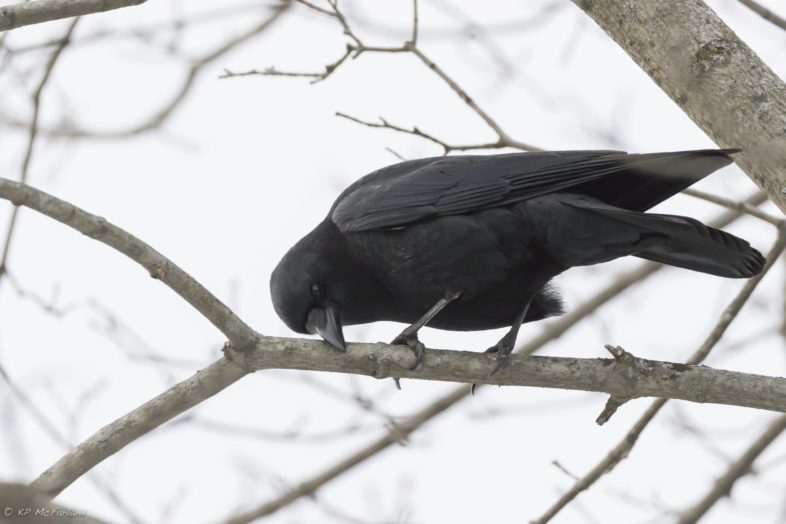
An American Crow bill wiping and calling in alarm as we stand under a large pre-roost site. © K.P. McFarland
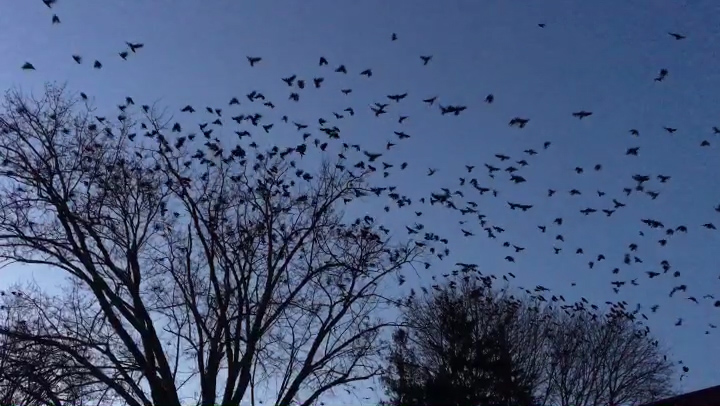
American Crows settling in to a winter roost at dusk. About 5,000 crows gathered here for the night. © K.P. McFarland
Outdoor Radio is a monthly feature produced in collaboration with Vermont Public Radio with support from the Jack and Dorothy Byrne Foundation. The program is produced by Vermont Public Radio chief audio engineer Chris Albertine.
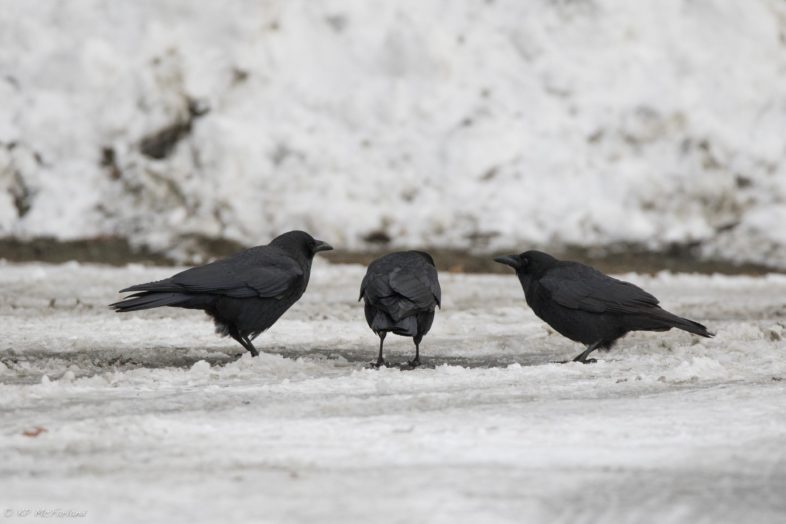
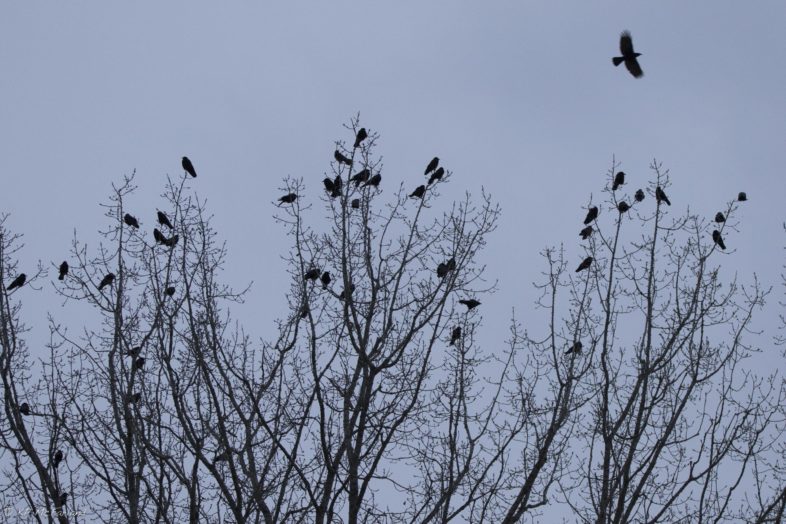

Shopping in West Leb in the late afternoon we always notice the confluence of crows, assembling for cocktails. Now we have a more complete story of what’s going on. Love the cawing in the background.
Ive noticed that too in west Leb!! so cool!!
Many, many hundreds of crows fly over Middlebury College en route to their night roost. I always stop on my way to the car and watch them fly over. Is the location of Middlebury area roost known? I would bet there are ultimately 1,000 or more birds at that location, and would love to check it out.
Nice post. It was really effective. Thank you for sharing.
Huge gathering 300-400 of crows yesterday evening (6:30) in the parking lot of the VA Hospital in WRJ. An amazing sight. Found your site to learn more. Thanks!
Neat! We were down in the RR yard on the WHite River when we recorded Outdoor Radio. They roosted there that night. There can be thousands in that roost on some nights! Glad you found our story!
Wonderful! A fascinating report! I wondered where that nighttime roost was.
Oct 24 2022… witnessed this amazing activity in West Lebanon NH today and found your audio story from 5 years ago… there were thousands today!!! Thank you for your story!
That’s so neat that you witnessed that and found our story! It is really an amazing thing to witness this time of year! If you have time, add this and all your observations of biodiversity to iNaturlaist.org or eBird.org. All the sightings help track movements and populations.